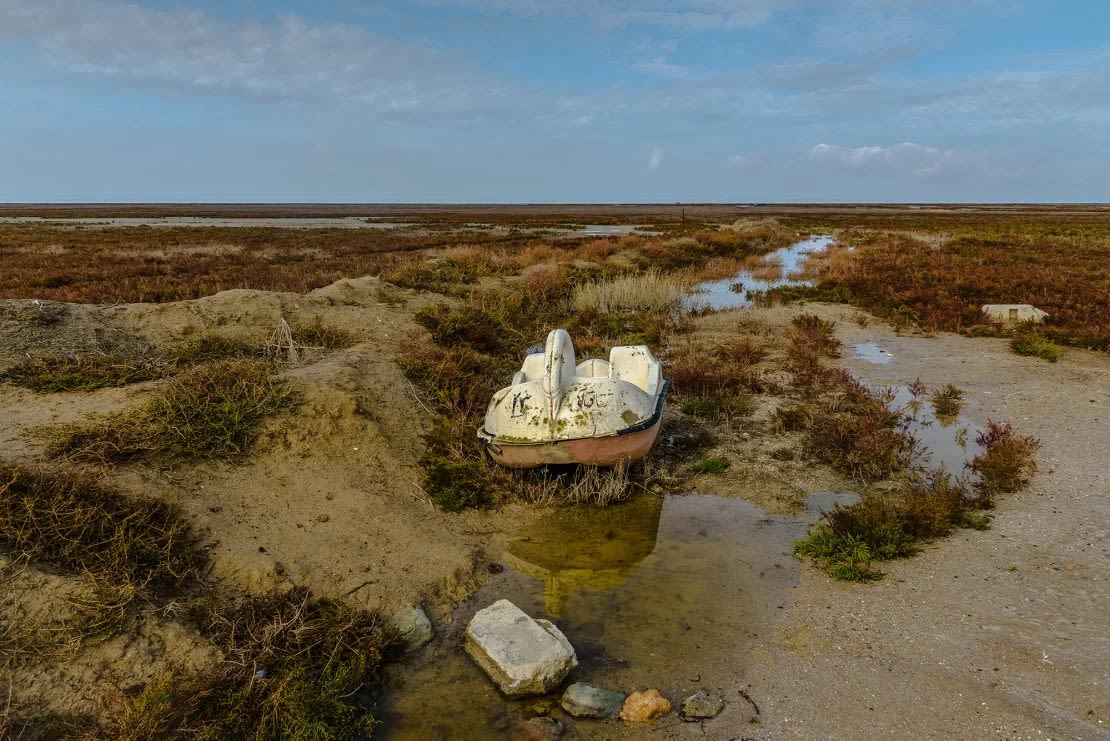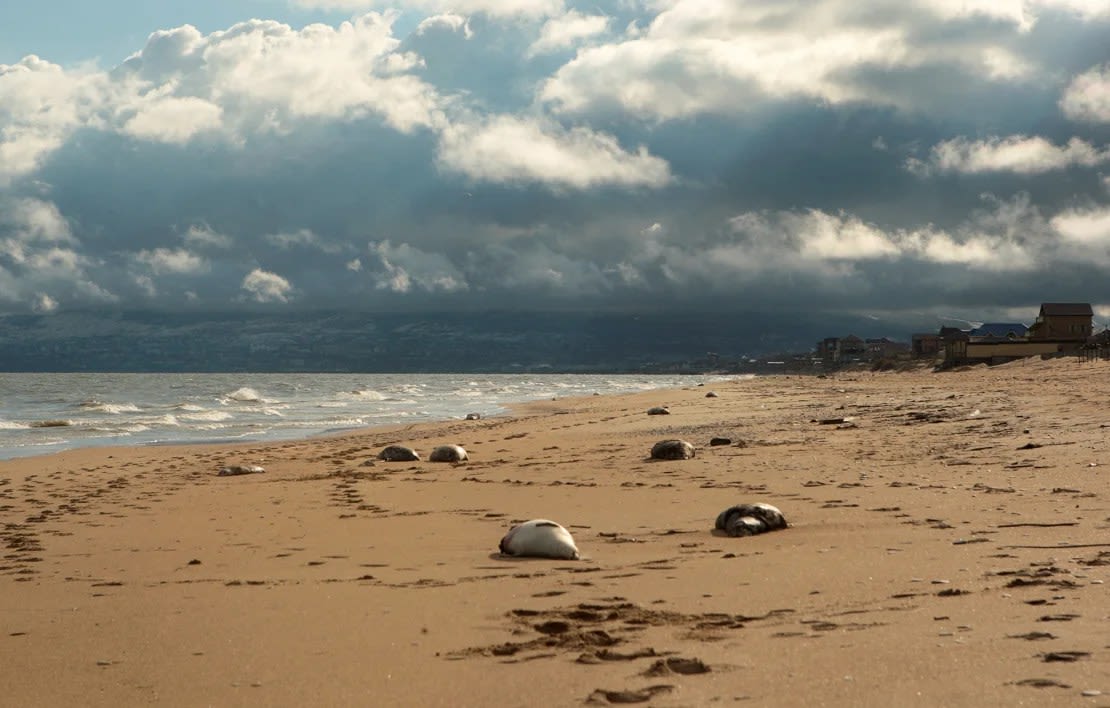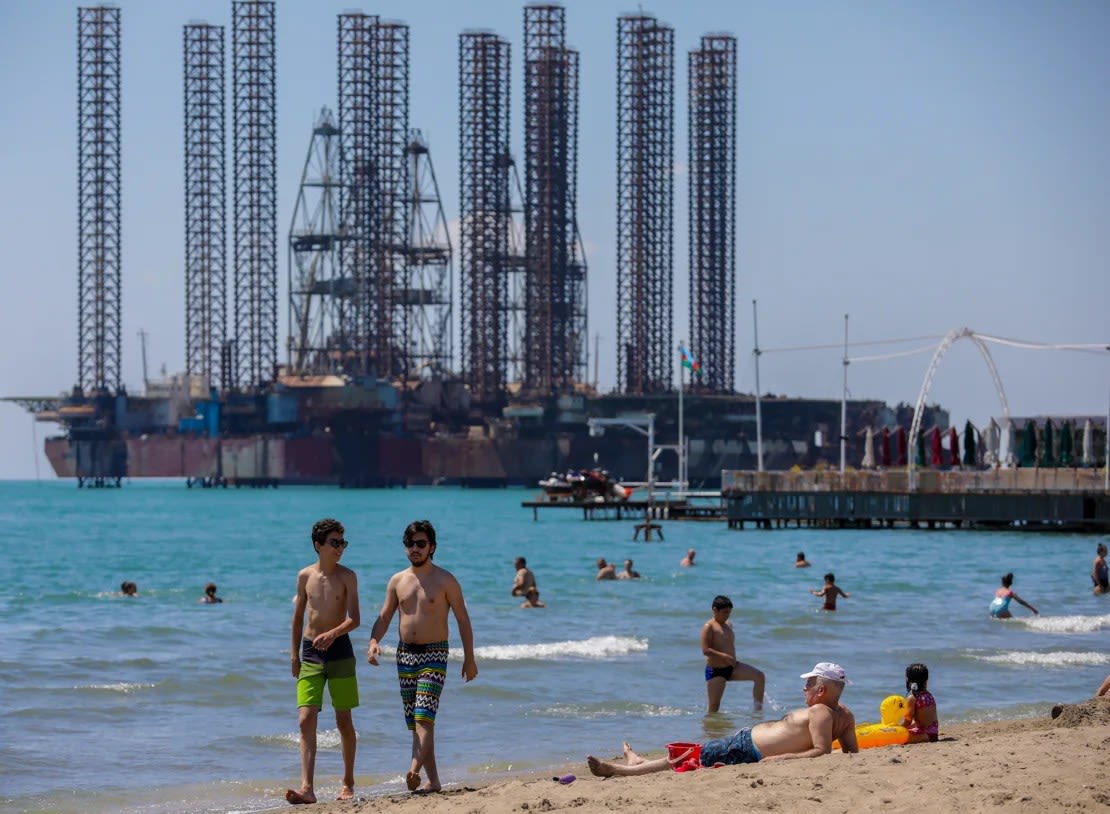The largest lake on the planet is shrinking rapidly and experts fear it may never recover

(CNN)- There is a spot on the coast from where Azamat Sarsenbayev jumped into the salty, blue-green Caspian Sea. Exactly a decade later, it now overlooks a bare, rocky terrain stretching to the horizon.
Water is receding rapidly from Aktau, the coastal city of Kazakhstan, where the environmental activist has spent his entire life. “It’s very hard to watch,” he said.
More than 1,600 kilometers south, near the Iranian city of Rasht, Khashir Javanmardi is concerned. The sea here is suffocating due to pollution.
“I can’t swim anymore… the water has changed,” said the photographer, who has traveled the southern Caspian coast and documented its decline.
Both men feel closely connected to the water they grew up near. Both of them are scared about their future.
The Caspian Sea is the planet’s largest inland sea and its largest lake, a vast body of water the size of Montana. Its winding coastline extends for more than 6,400 kilometers and is shared by five countries: Kazakhstan, Iran, Azerbaijan, Russia and Turkmenistan.
These countries depend on it for fishing, agriculture, tourism and drinking water, as well as for their reputed oil and gas reserves. The Caspian also helps regulate the climate of this arid region, providing rain and moisture to Central Asia.
But now he is in trouble.
Dam building, overexploitation, pollution and, increasingly, the human-caused climate crisis are causing its decline, and some experts fear that the Caspian Sea is being pushed to the point of no return.
While climate change is raising sea levels globally, this phenomenon means a different story for landlocked seas and lakes like the Caspian. They depend on a delicate balance between water flowing from rivers and rain and water that is lost through evaporation. As the world warms, this balance is changing, causing many lakes to shrink.
We don’t have to look far to see what the future may hold. The nearby Aral Sea, which stretches between Kazakhstan and Uzbekistan, was once one of the world’s largest lakes, but has been nearly destroyed by human activities and the growing climate crisis.
For many thousands of years, the Caspian Sea has oscillated between high and low due to temperature fluctuations and the advance and retreat of ice sheets. However, the decline has been accelerating in recent decades.
Human activities play an important role, as countries build reservoirs and dams. The Caspian is fed by 130 rivers, although about 80% of its water comes from just one: the Volga, Europe’s longest river, which flows through central and southern Russia.
According to Vali Kaleji, an expert in Central Asian and Caucasus studies at the University of Tehran, Russia has built 40 dams, while 18 more are under construction, reducing the flow of water entering the Caspian Sea.
But climate change is playing an increasingly important role, increasing evaporation rates and causing more erratic rainfall.
Matthias Prang, an Earth system modeler at the University of Bremen in Germany, said the level of the Caspian Sea has been falling since the mid-1990s, but has accelerated since 2005, falling by about 1.5 metres.
As the world gets warmer, sea levels are set to “fall dramatically,” Prange told CNN. Their research predicts a decline of 8 to 18 meters (26 to 59 ft) by the end of the century, depending on how quickly the world reduces fossil fuel pollution.
Another study suggests they could fall as much as 30 meters (98 ft) by 2100. Even under more optimistic global warming scenarios, the shallow northern part of the Caspian Sea, mainly around Kazakhstan, is set to disappear entirely, said Joe Singare. Professor of Paleoclimatology at the University of Reading and co-author of the study.


This is a crisis for the countries of the Caspian Sea. Fishing grounds will shrink, tourism will decline and the shipping industry will suffer as ships will struggle to dock in shallow port cities like Aktau, said Kaleji of Tehran University.
This will also have geopolitical implications. The five countries competing for rapidly depleting resources “could be in a race to extract more water”, Singarayer said. If changing coastlines force countries to make new claims, it could also trigger new conflicts over oil and gas reserves.
The situation is already catastrophic for the unique fauna of the Caspian Sea. It is home to hundreds of species, including the endangered wild sturgeon, the source of 90% of the world’s caviar.
The sea has been surrounded by land for at least 2 million years, and its extreme isolation has resulted in “very strange cockle-like creatures,” Wesseling told CNN.
But receding water is reducing oxygen levels in its depths, which “could wipe out what remains of millions of years of evolution,” he told CNN. It is “a huge crisis that almost no one knows about.”

It is also a threat to the Caspian seal, an endangered marine mammal found nowhere else in the world. Their breeding grounds in the shallow northeast of the Caspian Sea are changing and disappearing, while the animals also fight pollution and overfishing.
Asel Baimukanova, a researcher at the Institute of Hydrobiology and Ecology in Kazakhstan, said aerial measurements show a major decline in seal populations.
Scientists counted 25,000 in 2009 at a refuge on the Durnev Islands in the northeastern Caspian Sea. “By spring 2020, we didn’t see a single person,” he told CNN.
There are some easy solutions to this crisis. The Caspian Sea is in a region that has experienced much political instability and is shared between five countries, each of which will experience the fallout in different ways.
No country is to blame, Kaleji said, but if they do not take collective action, a repeat of the Aral Sea disaster could occur. There is no guarantee that the Caspian will “return to a natural, normal cycle,” he added.

Growing concern over the fate of the Caspian comes at a time when the region is under intense scrutiny.
Next month, world leaders will gather in Azerbaijan’s coastal city of Baku for the UN’s annual climate summit COP29, where they will discuss climate action in the shadow of the oil platforms located in this part of the Caspian Sea.
In August, the country’s President Ilham Aliyev said that the collapse of the Caspian Sea was “catastrophic” and was turning into an ecological disaster, but also that the country planned to expand its own production of the fossil fuels that fuel it. Is helping to give. ,
Back in Kazakhstan, Sarsenbayev is trying to draw attention to the Caspian’s plight through beautiful, sweeping images posted on Instagram.
If the climate crisis and overexploitation of water continue unabated, he fears “the Caspian Sea may suffer the fate of the Aral Sea.”
In Iran, Javanmardi continues to photograph the Caspian coast, documenting the polluted waters, shrunken shorelines and dried seabeds, while also highlighting the beauty that still exists and the relationship people have with the sea .
He wants people to wake up to what’s missing.
“This is the largest lake in the world,” he said, “everyone should consider it important.”
(tagstotranslate)world


